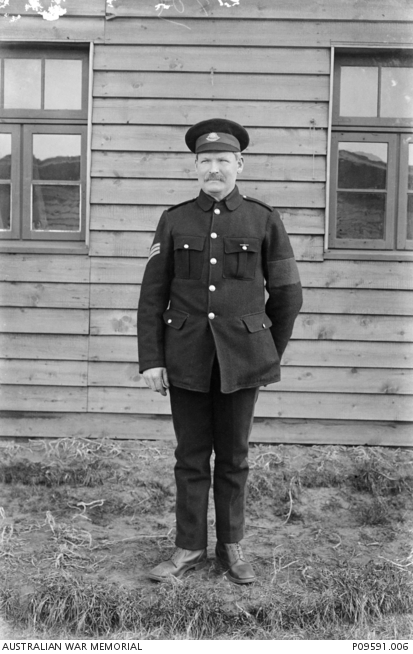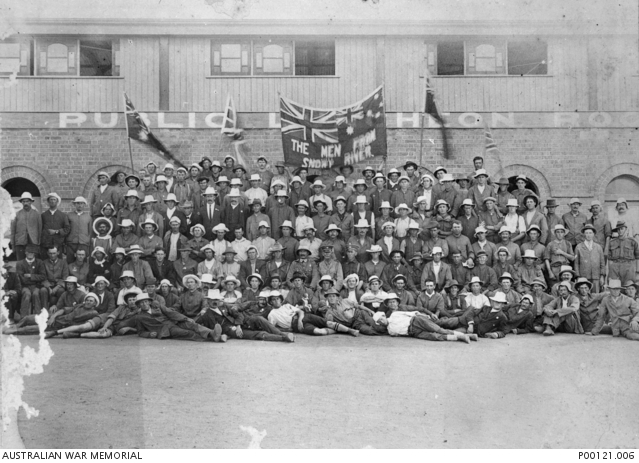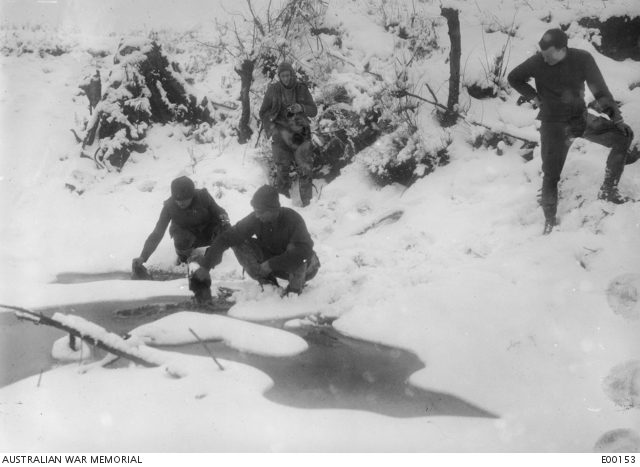The Australian Imperial Force (AIF) headwear 1914-1918
This is the third in a series of blogs about First World War uniforms and covers the basic aspects of the Australian Imperial Force headwear during the First World War.
The most distinctive and recognisable article of clothing worn by the Australian soldier was the khaki felt slouch hat. This item of headwear had been worn in Australia for some years before the turn of the century and was also popular elsewhere in the world. A similar hat was worn by the New Zealanders, the Canadians, the US Army, the Ghurkhas, and even the colonial German troops during the First World War, but it is very strongly identified with the Australian Imperial Force.
The slouch hat was first adopted in Australia by Colonel Tom Price in 1885 as the head dress for the Victorian Mounted Rifles, which he commanded. Originally it was worn looped up on the right hand side. The hat was widely worn by Australian troops during the Boer War, and in 1903, after Federation, it was universally adopted for the Australian Commonwealth Army.
During the First World War, the slouch hat was normally worn with a plain wool khaki puggaree (hat band) and the Australian General Service (‘Rising Sun’) badge on the looped up (left) side, and with a leather chin strap. However, some soldiers wore pleated cotton puggarees, some from their pre-war militia service. Many Light Horse units wore emu plumes. This began as a Queensland tradition but spread to most Light Horse units during the war. There were some exceptions, one was the 6th Light Horse Regiment, who wore a wallaby fur puggaree.
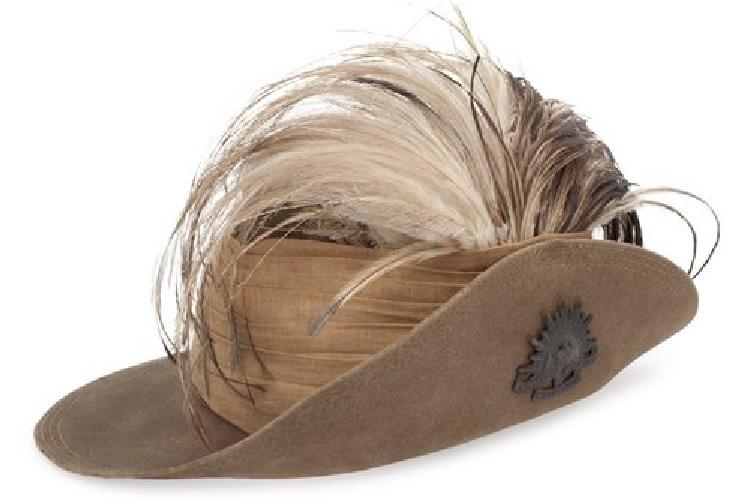
Reinforcements for the 6th Light Horse Regiment, wearing wallaby fur puggarees. Note that some of the men also have British Service Caps hanging off their greatcoat shoulder straps.
While some people think Australians only wore the slouch hat, in fact they wore a variety of headwear during the war. Early in the war, the British Service Cap (also called the peaked cap) was issued along with the slouch hat and was worn by large numbers of men and in fact most of the 1st Division landing at Gallipoli on 25 April 1915 was wearing the cap rather than the slouch hat. This hat was found to be inadequate at Gallipoli for coping with the sun, so separate “sun capes” (also called sun flaps, sun protectors, sun shades, neck capes, neck protectors, neck covers, neck curtains or neck shades) were also worn, attached to the cap by studs, hooks and eyes or by other means. Some "Summer peaked caps" were made with a sun cape built in, which could be folded up and secured at the front of the cap when not in use.
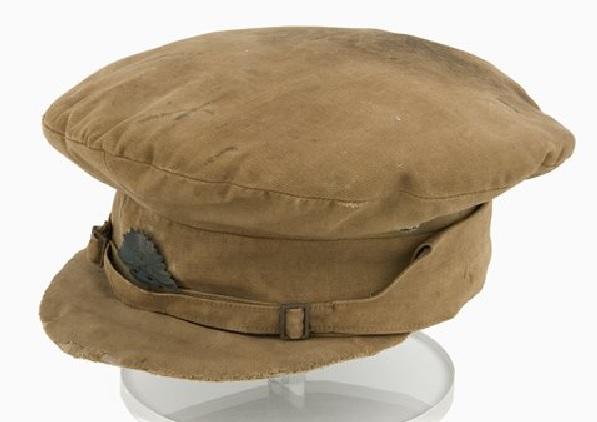
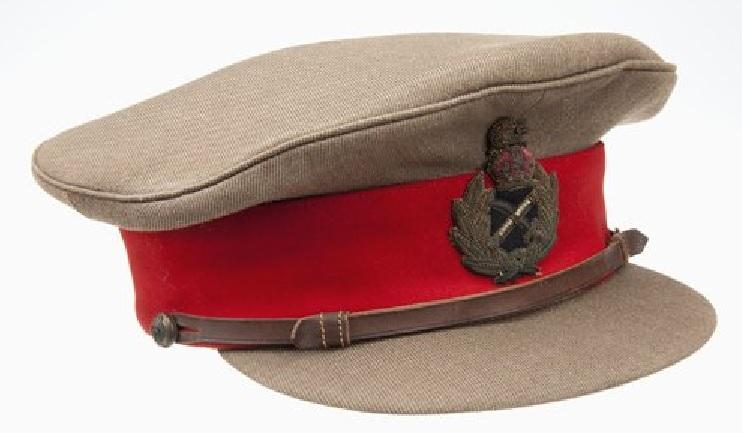
Even within the British Service cap there was a degree of variety – most were made of wool, with or without leather trim around the peak but full leather versions also existed, which were worn by despatch riders and motor transport personnel. There were also waterproofed cap covers for despatch riders. Some Australians taken prisoner by the German were issued with uniforms dyed black which had a matching black service cap with a brown band.
New enlistees, including men who took part in recruitment marches in 1915 and 1916 were usually issued with the "hat, white" a floppy hat similar to the bush hat (AKA giggle hat). It was also worn on board ship as as part of the clothing issued to soldiers when embarking for overseas service or to return home.
The recruits from the Men From Snowy River march 1916 wearing their white hats.
Soldiers exercising on board ship. Most are wearing their floppy white cotton hats.
Soldiers were issued with a "cap, comforter" (basically a knitted rectangle item with fold down ear flaps). As the war continued they also wore hand knitted beanies and balaclavas made at the home front. These were usually knitted in dull colours, such as khaki, black, and shades of brown and grey.
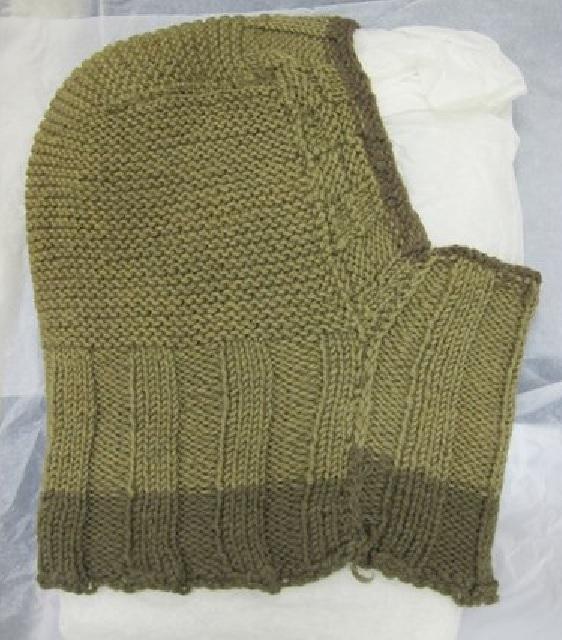
Sun helmets (Wolsley pattern cork helmets) were also worn by Australians, particularly in Egypt before the Gallipoli campaign and by many Light Horsemen at Gallipoli.
Three soldiers in a Light Horse trench at Gallipoli, note that each man is wearing a different type of headwear.
Between 1916 and 1918, on the Western Front, the Australians wore the British issue Brodie pattern steel helmet as head protection while in the trenches.
Members of the Australian Flying Corps (AFC) wore forage caps (side caps) on the ground and soft leather flying helmets in the air.












